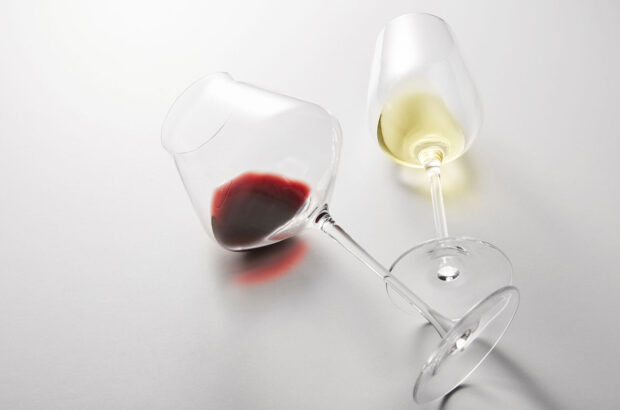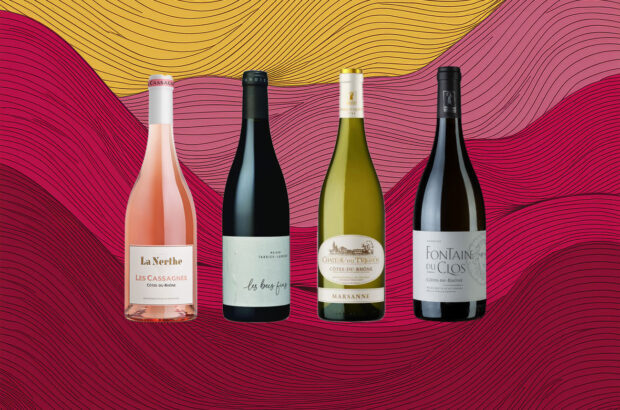Back in April, I used the word 'vinosity' in a blog about white Chateauneuf du Pape. One of Decanter's two Chinese translators, Sylvia Wu, queried the word with me. She'd looked it up, and it seemed to mean 'wine-like'. Was I saying that a wine was wine-like? If so, was it really worth saying?
Image credit: Thomas Skovsende
I set off into the dictionaries, including the complete Oxford English Dictionary, and Sylvia was right. Usage reveals some delicious metaphorical resonances — like Thackeray’s “Winking at his cousin with a pair of vinous eyes” or Meredith’s “He determined to overbear his cousin vinously”. The word’s plain meaning, however, goes no further than “Of the nature of wine; having the qualities of wine; tasting or smelling like wine; made of, or prepared with, wine” (though I note this entry in the OED hasn’t been updated since 1917).
To me, however, ‘vinous’ is a precious tasting term, and a distinctive quality of certain wines only. I’ll attempt to describe what I mean by it below. First, though, I decided to ask two of my favourite tasters (educator and author of Essential Winetasting Michael Schuster and collector and connoisseur Frank Ward) for their thoughts on this sometimes vexing term.
Frank Ward cited Alexis Lichine, who said that vinosity was “The essential quality or heart of a wine”. Ward defined a vinous wine as one which contains “noticeable alcohol … giving energy, flow, warmth”. Michael Schuster, too, suggested alcohol was important in this ‘positive, complimentary character’: “a mouth-filling quality from a certain weight of alcohol, but supported by a distinct richness and tenacity of flavor. Powerful, without necessarily being strong or forceful. Indeed any ‘fierce’ characteristics detract from the sensuous pleasure of vinosity.”
Both pointed out that great, delicate Rieslings (at 7 per cent or 8 per cent abv) seem to have no vinosity, but that vinosity also goes missing in the case of what Frank Ward called “potent, inebriating, spirity” wines of 15 per cent or more. “A vinous wine,” he summarised, “is so constituted that its bouquet and flavou r, with concentrated fruit at the core, are very much to the fore while the alcohol (like the blood stream in humans) is present implicitly rather than explicitly, its role being to provide unifying that energy and flow, a sense of warmth without hotness.”
Where have we got to, then? The ‘wine-like’ definition is beginning to look inadequate, since alcoholically light or over-burdened wines do not possess vinosity; could it be defined, therefore, as a seamless alcoholic equilibrium in a wine of middling strength?
I think it’s important not to lose sight of the fact that ‘vinous’ is definitely a fermentative character; no fruit juice, for example, is ever vinous, and it is this fermentative character which the standard ‘wine-like’ definition alludes to. It’s a kind of flavour development, a complexity in place of simplicity, which we have no other term for. Yet many wines, even in the middle range of alcoholic strengths, do not seem noticeably vinous to me. In other words, they seem to lack what I would call sinewiness or sappiness, pull and drive, line and length: all ‘vinous’ qualities.
A wealth of primary fruit, notably, seems to obscure any sense of vinosity in a wine. Intensely fruity wines are not vinous. Nor is it the first word which would come to mind in the case of an extravagantly sweet wine; an oaky wine; or a tannic, extractive wine. Vinosity is likewise missing in wines made from prematurely picked fruit; indeed part of the definition of ‘perfect ripeness’, I’d suggest, would be to deliver a sense of vinosity to the finished wine.
‘Vinous’ is a term I’d probably use more often about a white wine than a red; more often about a light or medium-bodied red wine than about a deep red wine; and more often about a mature red wine than a young red wine (though young white wines can certainly be vinous). In other words, any kind of flavoury loudness or ‘noise’ in a wine – what Schuster called fierce characteristics — will obscure such vinosity as that wine might possess.
The term is of value not least because vinous wines seem to me to be eminently gastronomic and digestible. Michael Schuster felt it was “best exemplified by fine Grand Cru Burgundy, white or red,” and to me it’s a quality particularly associated with successful white burgundy, and with good red burgundy at maturity. It’s a quality, in other words, which any global producer of Chardonnay or Pinot should give a little thought to trying to achieve or express — though it’s also a quality potentially open to almost any serious, well-constituted wine from almost any variety at some stage of its life. (I don’t feel there is necessarily an upper alcohol limit for a vinous wine, though a very fruity wine in which alcohol was not palpable would not be vinous.)
My finishing definition, then, is that vinosity is ‘a quality of seamless alcoholic warmth and palpable fermentative complexity in a wine of harmonious, balanced character’. This definition, though, still seems a little cumbersome: can any reader do better?
Written by Andrew Jefford







